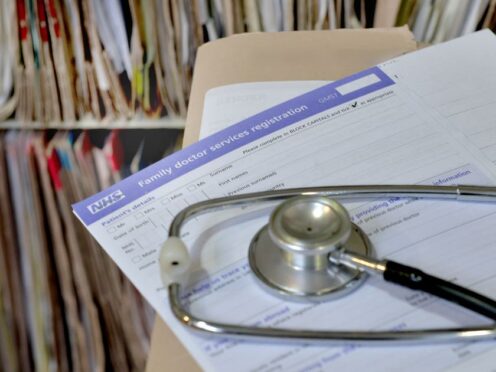
Physician associates (PAs) are “not substitutes” for GPs and must be supervised, NHS England has said.
A new letter to all GP surgeries, primary care network clinical directors, integrated care board chief executives and NHS England regional directors said PAs are “specifically trained to work collaboratively with doctors and others” and all work undertaken by PAs “must be supervised and debriefed with their supervising GP”.
It comes after concerns were raised about the role of PAs following a patient death and other mistakes in care.
The British Medical Association (BMA) has said its members are worried about the role of PAs, who it said should be stopped from diagnosing patients.
It has published a framework which it says will “improve patient safety”.
The new NHS England letter has been signed by Professor Sir Stephen Powis, NHS national medical director; Dr Navina Evans, chief workforce, training and education officer at NHS England and Dr Claire Fuller, national medical director for primary care.
Regarding supervision, it said: “It is essential that physician associate roles are introduced safely and in a supportive environment, ensuring oversight of the supervision and tasks being carried out.
“We ask that practices review their processes to ensure that they have appropriate supervision, supporting governance and systems in place.
“Underpinning this is the supervising GP’s confidence of the PA’s competence, based on the knowledge and skills gained through their training and development.”
The letter also reminds the NHS that “PAs are not able to prescribe” and every practice should have a comprehensive policy on access and restrictions to electronic patient records.

“This policy should cover aspects such as appropriate access to prescribing, results, referrals, and patient clinical notes, and provide assurance that clinicians are not able to undertake activities falling outside of their role’s scope of practice.”
Under a section titled “role clarity”, the letter said there is a need to ensure patients understand who is caring for them.
“All clinical and administrative/clerical staff (for example, receptionists) must be educated on the PA role and make it clear to patients that they are seeing a PA,” it added.
“As part of good governance processes, all staff should be aware of how to triage patients so that they are seen appropriately by a clinician working within their level of competence.”
PAs are graduates – usually with a health or life sciences degree – who have undertaken two years of postgraduate training.
According to the NHS, they work under the supervision of a doctor and can diagnose people, take medical histories, perform physical examinations, see patients with long-term conditions, analyse test results and develop management plans.
Most associates work in GP surgeries, acute medicine and emergency medicine.
In England, NHS England and the Government have said they will increase the physician associate workforce to 10,000 from around 3,300 at present.
Emily Chesterton, 30, died in November 2022 from a pulmonary embolism after being misdiagnosed by a PA on two occasions when she visited her local GP practice in Crouch End, north London.
She had been under the impression that she was seeing a GP when she had been seeing a PA after being triaged by a practice receptionist.
The PA failed on both occasions to spot her leg pain and breathlessness was a blood clot, which ultimately travelled to her lungs.
Instead, Ms Chesterton was told she had anxiety.
A coroner later ruled she “should have been immediately referred to a hospital emergency unit” where she would likely have been treated for pulmonary embolism and would have survived.
Her parents, Brendan Chesterton, 64, a retired maths and ICT teacher, and his wife Marion, 65, a retired languages teacher, back the BMA’s calls for much tighter controls over the work of PAs.

Enjoy the convenience of having The Sunday Post delivered as a digital ePaper straight to your smartphone, tablet or computer.
Subscribe for only £5.49 a month and enjoy all the benefits of the printed paper as a digital replica.
Subscribe